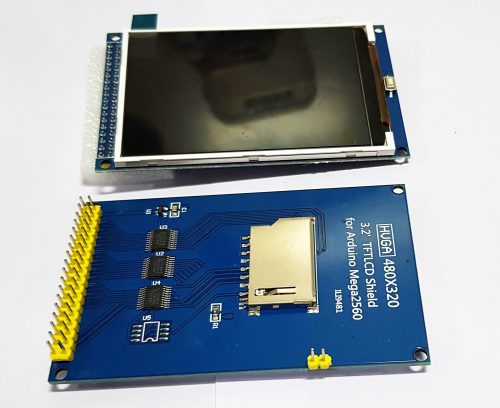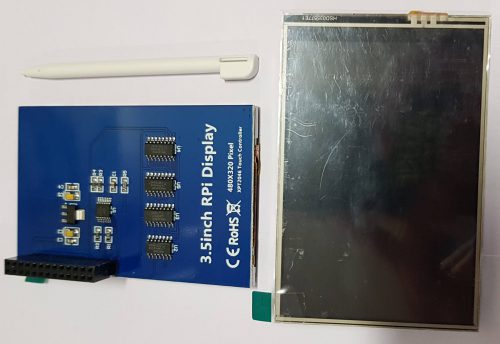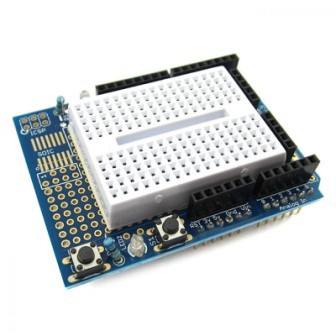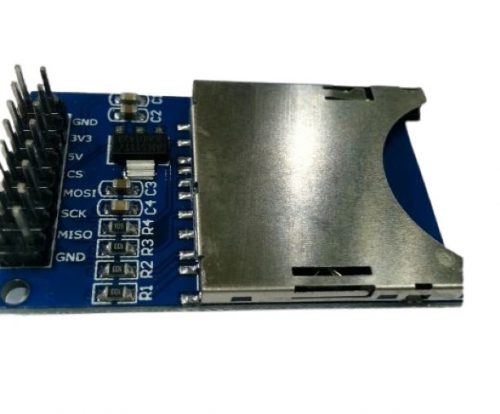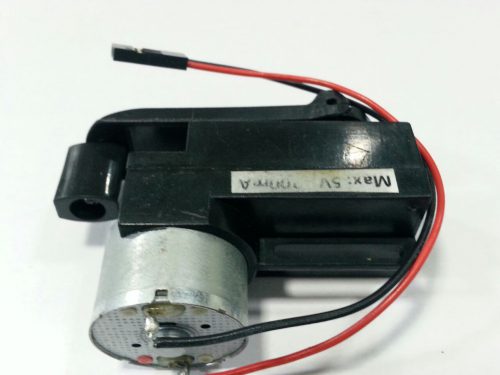-
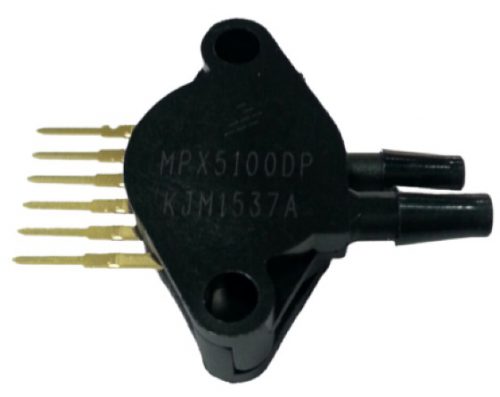 The MPX5010DP is a dual port, integrated silicon pressure sensor in 6 pin SIP package. This piezoresistive transducer is state of the art monolithic silicon pressure sensor designed for wide range of applications. It is ideally suited for microprocessor or microcontroller based system. This transducer combines advanced micromachining techniques, thin-film metallization and bipolar processing to provide an accurate, high level analogue output signal that is proportional to applied pressure. The axial port has been modified to accommodate industrial grade tubing. >On-chip signal conditioned, temperature compensated and calibrated >Differential configuration >5.0% maximum error over 0°C to 85°C >Durable epoxy unibody >Temperature compensated over -40°C to 125°C >Patented silicon shear stress strain gauge >Pressure range from 0KPa to 10KPa >Supply voltage range from 4.75VDC to 5.25VDC >Sensitivity of 450mV/mm >Response time of 1ms
The MPX5010DP is a dual port, integrated silicon pressure sensor in 6 pin SIP package. This piezoresistive transducer is state of the art monolithic silicon pressure sensor designed for wide range of applications. It is ideally suited for microprocessor or microcontroller based system. This transducer combines advanced micromachining techniques, thin-film metallization and bipolar processing to provide an accurate, high level analogue output signal that is proportional to applied pressure. The axial port has been modified to accommodate industrial grade tubing. >On-chip signal conditioned, temperature compensated and calibrated >Differential configuration >5.0% maximum error over 0°C to 85°C >Durable epoxy unibody >Temperature compensated over -40°C to 125°C >Patented silicon shear stress strain gauge >Pressure range from 0KPa to 10KPa >Supply voltage range from 4.75VDC to 5.25VDC >Sensitivity of 450mV/mm >Response time of 1ms -
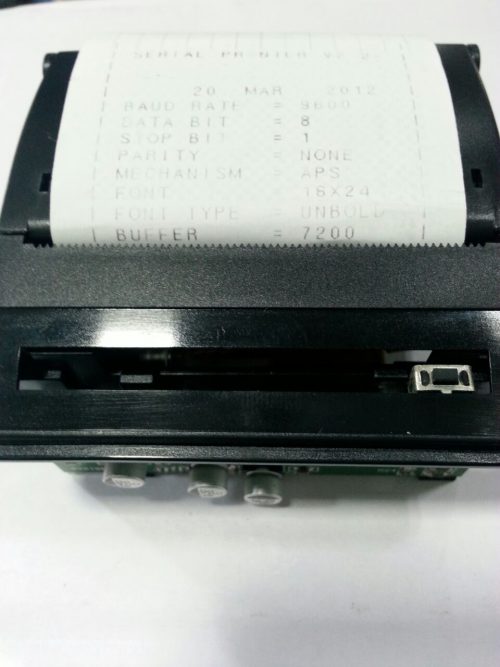 Featuring our Ultra Compact Bucket Printer Line – EPM-203 Thermal Printer from APS, integrating printers to your product were never so easy. Offering complete technical support to help you with your design we also undertake customized design solutions. Printer Specifications: 2 Inch, 3 Inch & 4 Inch Operating Voltage: 5V, 12V & 24V Cutter: Optional
Featuring our Ultra Compact Bucket Printer Line – EPM-203 Thermal Printer from APS, integrating printers to your product were never so easy. Offering complete technical support to help you with your design we also undertake customized design solutions. Printer Specifications: 2 Inch, 3 Inch & 4 Inch Operating Voltage: 5V, 12V & 24V Cutter: Optional -
 LPC2148 16/32 bit ARM7TDMI-S with 512K Bytes Program Flash, 42KBytes RAM, USB 2.0, RTC, 10 bit ADC 2.44 uS, 2x UARTs, 2x I2C, SPI, 2x 32bitTIMERS, 6x PWM, 8x CCR, 1x DAC, WDT, 5V tolerant I/O, up to 60MHz operation standard JTAG connector with ARM 2x10 pin layout forprogramming/debugging with ARM-JTAG Perfect solution for developing USB peripherials status LED power supply LED power supply filtering capacitor 12 Mhz crystal on socket 32768 Hz crystal and RTC backup battery connector extension headers for all uC ports Extension header for Voltages 3.3v , UART , JTAG and USB D D-
LPC2148 16/32 bit ARM7TDMI-S with 512K Bytes Program Flash, 42KBytes RAM, USB 2.0, RTC, 10 bit ADC 2.44 uS, 2x UARTs, 2x I2C, SPI, 2x 32bitTIMERS, 6x PWM, 8x CCR, 1x DAC, WDT, 5V tolerant I/O, up to 60MHz operation standard JTAG connector with ARM 2x10 pin layout forprogramming/debugging with ARM-JTAG Perfect solution for developing USB peripherials status LED power supply LED power supply filtering capacitor 12 Mhz crystal on socket 32768 Hz crystal and RTC backup battery connector extension headers for all uC ports Extension header for Voltages 3.3v , UART , JTAG and USB D D- -
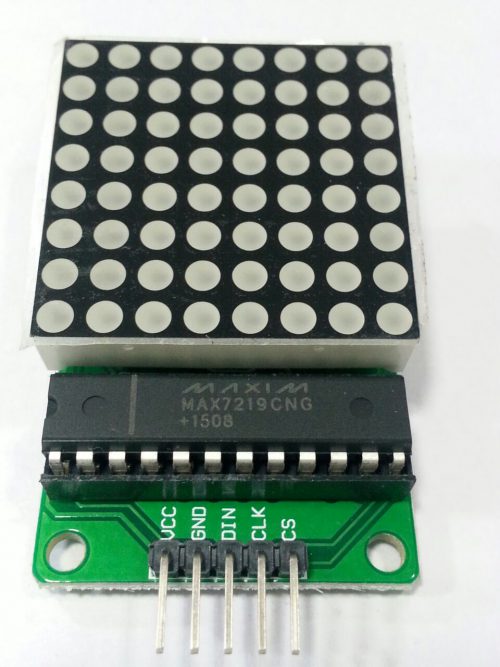 It is an easily cascadable 8×8 monochromatic LED dot matrix display module with onboard MAXIM’s MAX7219 LED driver chip. The MAX7219 allows you to drive the LED matrix using only three I/O pins of Arduino or any other microcontroller. The LED matrix module used in Easy Matrix has a bigger dot size (5mm) and has the overall display dimensions of 60.2mm x 60.2mm (2.4″x2.4″). It is easily cascadable in series with the help of precisely aligned male and female header pairs located on the left and right sides of the display module. With lots of freely available Arduino libraries for MAX7219 chip, this module is easy to use in any Arduino project for displaying basic text and animation.
It is an easily cascadable 8×8 monochromatic LED dot matrix display module with onboard MAXIM’s MAX7219 LED driver chip. The MAX7219 allows you to drive the LED matrix using only three I/O pins of Arduino or any other microcontroller. The LED matrix module used in Easy Matrix has a bigger dot size (5mm) and has the overall display dimensions of 60.2mm x 60.2mm (2.4″x2.4″). It is easily cascadable in series with the help of precisely aligned male and female header pairs located on the left and right sides of the display module. With lots of freely available Arduino libraries for MAX7219 chip, this module is easy to use in any Arduino project for displaying basic text and animation. -
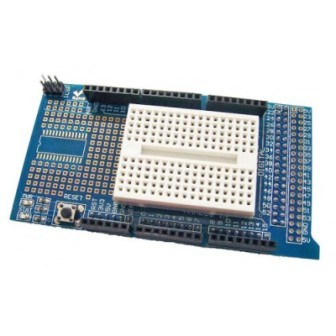 The Mega2560 Shield makes it easy for you to design custom circuits. You can solder parts to the prototyping area to create your project, or use it with a small solderless breadboard to quickly test circuit ideas without having to solder. It's got extra connections for all of the Arduino I/O pins, and it's got space to mount through-hole and surface mount integrated circuits. It's a convenient way to make your custom circuit and Arduino into a single module.
The Mega2560 Shield makes it easy for you to design custom circuits. You can solder parts to the prototyping area to create your project, or use it with a small solderless breadboard to quickly test circuit ideas without having to solder. It's got extra connections for all of the Arduino I/O pins, and it's got space to mount through-hole and surface mount integrated circuits. It's a convenient way to make your custom circuit and Arduino into a single module. -
 PICkit 2 has a separate programmer/debugger unit which plugs into the board carrying the chip to be programmed, whereas the PICkit 1 was a single unit. This makes it possible to use the programmer with a custom circuit board via an In Circuit Serial Programming (ICSP) header. This feature is not intended[3] for so-called "production" programming, however. The PICkit 2 uses an internal PIC18F2550 with FullSpeed USB. The latest PICkit 2 firmware allows the user to program and debug most of the 8 and 16 bit PICmicro and dsPIC members of the Microchip product line. The PICkit 2 is open to the public, including its hardware schematic, firmware source code (in C language) and application programs (in C# language). End users and third parties can easily modify both the hardware and software for enhanced features. e.g. Linux version of PICkit 2 application software, DOS style CMD support, etc.
PICkit 2 has a separate programmer/debugger unit which plugs into the board carrying the chip to be programmed, whereas the PICkit 1 was a single unit. This makes it possible to use the programmer with a custom circuit board via an In Circuit Serial Programming (ICSP) header. This feature is not intended[3] for so-called "production" programming, however. The PICkit 2 uses an internal PIC18F2550 with FullSpeed USB. The latest PICkit 2 firmware allows the user to program and debug most of the 8 and 16 bit PICmicro and dsPIC members of the Microchip product line. The PICkit 2 is open to the public, including its hardware schematic, firmware source code (in C language) and application programs (in C# language). End users and third parties can easily modify both the hardware and software for enhanced features. e.g. Linux version of PICkit 2 application software, DOS style CMD support, etc. -
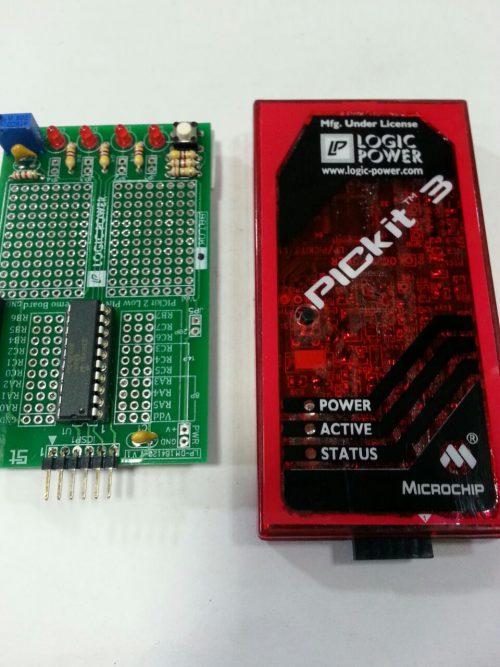 Microchip has gone on to manufacture the PICkit 3, a variation of the PICkit 2 with the same form factor and a new translucent case. It features a faster 16-bit PIC24F processor and a wider voltage regulation range. There are some complaints of it not being as reliable as the Pickit 2. Both PICkit 2 and PICkit 3 have internal, switch-mode voltage regulators. This allows them, in the case of the PICkit 2, to generate voltages from 2.5 to 5 volts, or in the case of the PICkit 3, 2.5 to 5.5 volts, from a 5 V USB supply, at around 100 mA. Both have options for calibrating the output with a multimeter, for increased accuracy. Additionally, for some PICs, the MCLR programming voltage can be generated, at around 13 to 14 volts. This voltage is required to reprogram the flash memory.
Microchip has gone on to manufacture the PICkit 3, a variation of the PICkit 2 with the same form factor and a new translucent case. It features a faster 16-bit PIC24F processor and a wider voltage regulation range. There are some complaints of it not being as reliable as the Pickit 2. Both PICkit 2 and PICkit 3 have internal, switch-mode voltage regulators. This allows them, in the case of the PICkit 2, to generate voltages from 2.5 to 5 volts, or in the case of the PICkit 3, 2.5 to 5.5 volts, from a 5 V USB supply, at around 100 mA. Both have options for calibrating the output with a multimeter, for increased accuracy. Additionally, for some PICs, the MCLR programming voltage can be generated, at around 13 to 14 volts. This voltage is required to reprogram the flash memory. -
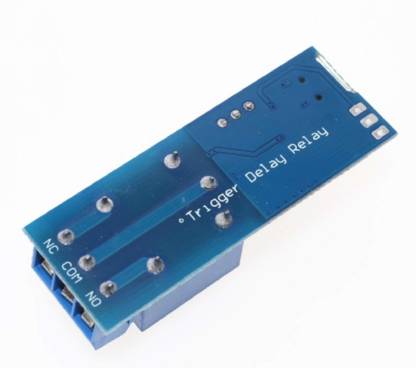
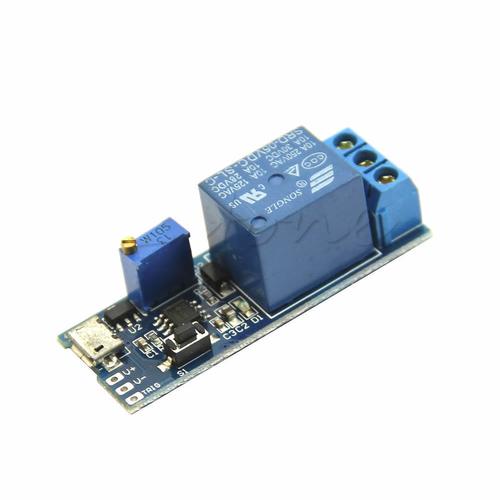 Highlights: By adjusting the potentiometer can set the length of time. MicroUSB 5.0V power supply with an input port, easy to use. 5 ~ 30V wide supply voltage. External signaltrigger and keytriggerin two ways. With a relay indicator. Anti-interference ability, the relay at various interference will not misoperation, suitable for industrial control.
Highlights: By adjusting the potentiometer can set the length of time. MicroUSB 5.0V power supply with an input port, easy to use. 5 ~ 30V wide supply voltage. External signaltrigger and keytriggerin two ways. With a relay indicator. Anti-interference ability, the relay at various interference will not misoperation, suitable for industrial control. -
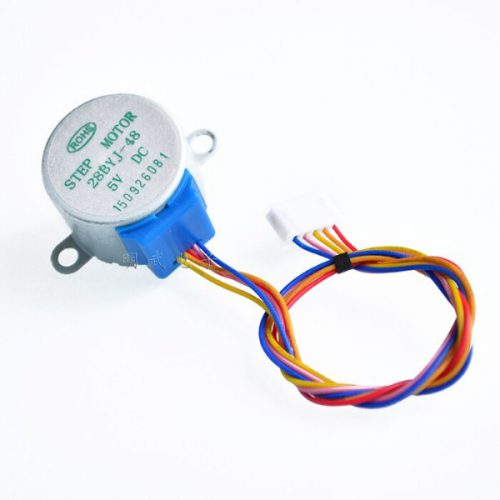 A unipolar stepper motor has one winding with center tap per phase. Each section of windings is switched on for each direction of magnetic field. Since in this arrangement a magnetic pole can be reversed without switching the direction of current, the commutation circuit can be made very simple (e.g., a single transistor) for each winding. Typically, given a phase, the center tap of each winding is made common: giving three leads per phase and six leads for a typical two phase motor. Often, these two phase commons are internally joined, so the motor has only five leads.
A unipolar stepper motor has one winding with center tap per phase. Each section of windings is switched on for each direction of magnetic field. Since in this arrangement a magnetic pole can be reversed without switching the direction of current, the commutation circuit can be made very simple (e.g., a single transistor) for each winding. Typically, given a phase, the center tap of each winding is made common: giving three leads per phase and six leads for a typical two phase motor. Often, these two phase commons are internally joined, so the motor has only five leads. -
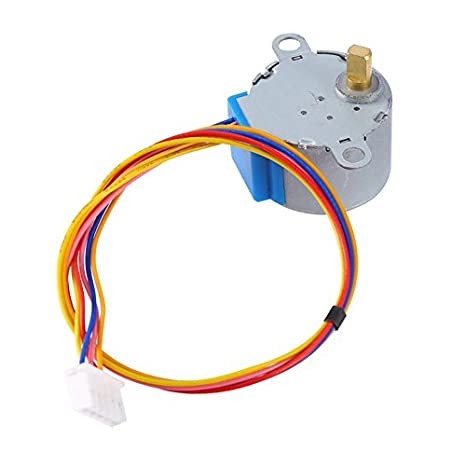 A unipolar stepper motor has one winding with center tap per phase. Each section of windings is switched on for each direction of magnetic field. Since in this arrangement a magnetic pole can be reversed without switching the direction of current, the commutation circuit can be made very simple (e.g., a single transistor) for each winding. Typically, given a phase, the center tap of each winding is made common: giving three leads per phase and six leads for a typical two phase motor. Often, these two phase commons are internally joined, so the motor has only five leads.
A unipolar stepper motor has one winding with center tap per phase. Each section of windings is switched on for each direction of magnetic field. Since in this arrangement a magnetic pole can be reversed without switching the direction of current, the commutation circuit can be made very simple (e.g., a single transistor) for each winding. Typically, given a phase, the center tap of each winding is made common: giving three leads per phase and six leads for a typical two phase motor. Often, these two phase commons are internally joined, so the motor has only five leads.


